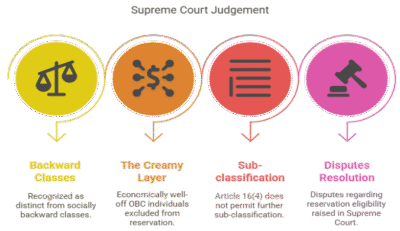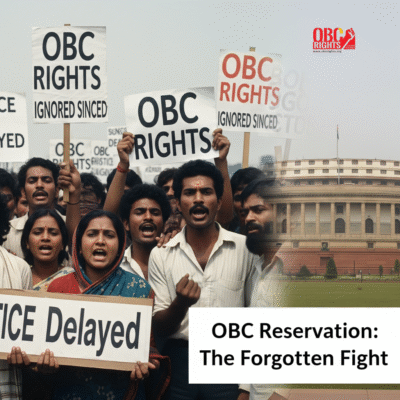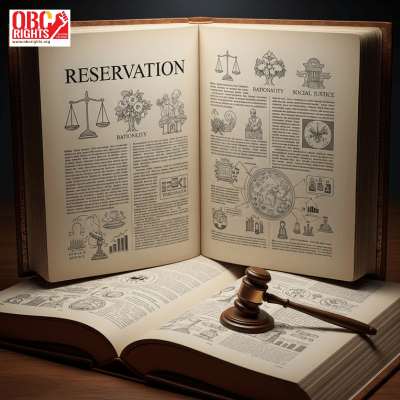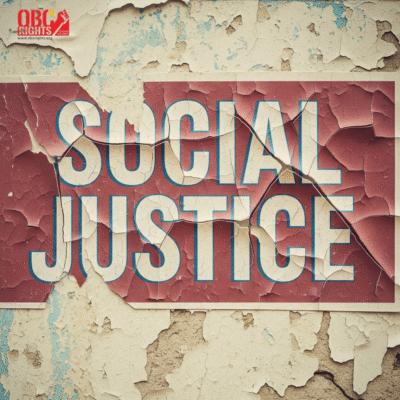Despite being a significant segment of India’s population, the journey of the Other Backward Classes (OBCs) toward social justice and equitable representation has been one of prolonged neglect and delayed action. Since Independence, the State’s response to OBC inclusion has often been hesitant, inadequate, and fraught with conditionalities. Their story is not just about recognition, but about the persistent struggle for fair implementation.
The Two National Commissions for Backward Classes:
First National Commission (1953–1955)
The Constitution of India, under Article 340(1), empowered the President to appoint a commission to investigate the conditions of backward classes. On 20 January 1953, the First National Backward Classes Commission was formed, headed by Acharya Kaka Kalelkar as its chairman. Following its investigation, it recognized 2,399 communities throughout India as backward.
The Commission submitted its report on 30 March 1955, but it was met with contempt. Neither the Lok Sabha nor the Rajya Sabha seriously debated the findings. Eventually, the report was rejected on 14 August 1961. Even more ironically, Kalelkar himself distanced from the report in his covering letter, arguing that caste should not be used as a basis for identifying backwardness. The result: a lost opportunity and 17 more years of OBC invisibility in national policy.
Second National Commission (1978–1980)
After years of silence, the Second Backward Class Commission was finally constituted on 20 December 1978, led by Prime Minister Morarji Desai. The commission was led by Former MP B.P. Mandal and carried out its survey work during the years 1979 and 1980.
In its historic report submitted on 31 December 1980, the Commission concluded that 52% of India’s population belonged to the OBC category and recommended 27% reservation in government jobs, education, and public sector employment. It identified 3,743 castes as backward. The report made several pivotal recommendations:
- OBC candidates selected on merit in the general category should not be counted against the OBC reservation quota.
- The 27% quota should be applied to promotions as well.
- Backlog vacancies for OBCs should be preserved for at least three years before being reallocated.
- OBCs should be given age relaxation benefits on par with those provided to SCs and STs..
- The rotational policy in the reservation should be extended to OBCs.
On 7th August 1990, the National Front Government led by Mr.V.P.Singh, the Prime Minister of India, declared 27% Reservation to Other Backward Classes (OBCs)
However, this progressive move sparked violent opposition, particularly in North India. Widespread protests, clashes, and the tragic loss of lives marked the resistance to OBC reservations.
What the Supreme Court Said on OBC Reservations:
Following the announcement of 27% reservations for OBCs, several cases were filed in the Supreme Court of India. A special bench of nine judges in the Supreme Court took up Writ Petition (Civil) No. 930/1990, widely known as the Indra Sawhney case or the Mandal case. The final judgment in this important case was given on 16 November 1992. and its key highlights were:
- Backward Classes under Article 16(4) were recognized as distinct from merely socially and educationally backward classes.
- The Court introduced the concept of the “Creamy Layer,” stating that OBC individuals who are economically well-off should be excluded from receiving reservation benefits.
- Article 16(4) does not permit further sub-classification of backward classes into “backward” and “more backward”.
- Any new disputes regarding eligibility or criteria for reservation must be raised only in the Supreme Court.

Creamy Layer Rule:
In the notable 1992 case of Indra Sawhney v. Union of India, the Supreme Court approved 27% reservation for OBCs while also bringing in the debated concept of the “creamy layer”. It ruled that OBC individuals with an annual income of ₹1 lakh or more (at that time) would be excluded from the benefits of reservation under the OBC category. This income limit has now been increased to ₹8 lakhs annually, yet the restriction still applies.
Reservation in Promotions for SC/STs:
After this judgment, the Indian Parliament passed the 77th Constitutional Amendment Act in 1995. It added Clause (4A) to Article 16, empowering the State to provide reservation in promotions in public employment for Scheduled Castes and Scheduled Tribes if they are not adequately represented in government services.



